The Long-Lasting Legacy of the Great Migration
The Smithsonian: When millions of African-Americans fled the South in search of a better life, they remade the nation in ways that are still being felt.
The Great Migration would expose the racial divisions and disparities that in many ways continue to plague the nation and dominate headlines today, from police killings of unarmed African-Americans to mass incarceration to widely documented biases in employment, housing, health care and education. Indeed, two of the most tragically recognizable descendants of the Great Migration are Emmett Till, a 14-year-old Chicago boy killed in Mississippi in 1955, and Tamir Rice, a 12-year-old Cleveland boy shot to death by police in 2014 in the city where his ancestors had fled. Their fates are a reminder that the perils the people sought to escape were not confined to the South, nor to the past. (Read more)
Deep in the Swamps, Archaeologists Are Finding How Fugitive Slaves Kept Their Freedom
 Richard Grant, The Smithsonian: “The worse it gets, as I wade and stumble through the Great Dismal Swamp, the better I understand its history as a place of refuge. Each ripping thorn and sucking mud hole makes it clearer. It was the dense, tangled hostility of the swamp and its enormous size that enabled hundreds, and perhaps thousands, of escaped slaves to live here in freedom.
Richard Grant, The Smithsonian: “The worse it gets, as I wade and stumble through the Great Dismal Swamp, the better I understand its history as a place of refuge. Each ripping thorn and sucking mud hole makes it clearer. It was the dense, tangled hostility of the swamp and its enormous size that enabled hundreds, and perhaps thousands, of escaped slaves to live here in freedom.
“We don’t know much about them, but thanks to the archaeologist hacking through the mire ahead of me, we know they were out here, subsisting in hidden communities, and using almost nothing from the outside world until the 19th century. The Dismal Swamp covered great tracts of southeast Virginia and northeast North Carolina, and its vegetation was far too thick for horses or canoes. In the early 1600s, Native Americans fleeing the colonial frontier took refuge here, and they were soon joined by fugitive slaves, and probably some whites escaping indentured servitude or hiding from the law. From about 1680 to the Civil War, it appears that the swamp communities were dominated by Africans and African-Americans.” (Read more)
Prairie View A&M’s Zelmo Beaty is finally in the Hall of Fame, joins Willis Reed as the only other SWAC player in the basketball HOF
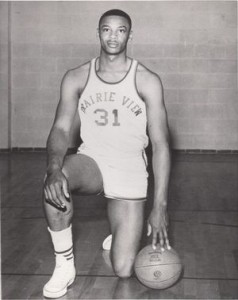 Zelmo Beaty died of cancer at the age of 73 on Aug. 27, 2013. His illustrious basketball legacy, however, lives on, and on Sep. 9 the big man posthumously took center stage as one of 10 people inducted into the Naismith Memorial Basketball Hall of Fame in Springfield, Massachusetts. Former teammate Willie Wise knows it’s a prestigious honor that’s warranted and long overdue.
Zelmo Beaty died of cancer at the age of 73 on Aug. 27, 2013. His illustrious basketball legacy, however, lives on, and on Sep. 9 the big man posthumously took center stage as one of 10 people inducted into the Naismith Memorial Basketball Hall of Fame in Springfield, Massachusetts. Former teammate Willie Wise knows it’s a prestigious honor that’s warranted and long overdue.
“Is he deserving of the Hall of Fame?’’ Wise asked rhetorically. “Yeah, and it should have been 10 or 20 years ago. When he was alive he should have gone in. So it’s a travesty that it’s been this long.’’
Beaty completed his NBA/ABA career with 15,207 points and 9,665 rebounds and wound up averaging 16 points and 10.4 rebounds a game in the NBA. Beaty was born in Hillister, Texas, a small sawmill town located eight miles south of Woodville, Texas, in south central Tyler County. Hillister didn’t have a high school, so Beaty led Woodville Scott High School to back-to-back Prairie View Interscholastic League Class 1A state titles in 1957 and ’58. (read more)
TIPHC Bookshelf
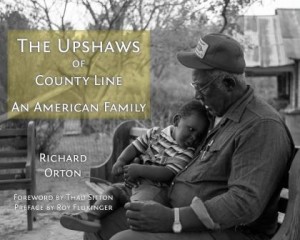 Published scholarship on black history in Texas is growing and we’d like to share with you some suggested readings, both current and past, from some of the preeminent history scholars in Texas and beyond. We invite you to take a look at our bookshelf page — including a featured selection — and check back as the list grows. A different selection will be featured each week. We welcome suggestions and reviews. This week, we offer, “The Upshaws of County Line, An American Family,” by Richard Orton.
Published scholarship on black history in Texas is growing and we’d like to share with you some suggested readings, both current and past, from some of the preeminent history scholars in Texas and beyond. We invite you to take a look at our bookshelf page — including a featured selection — and check back as the list grows. A different selection will be featured each week. We welcome suggestions and reviews. This week, we offer, “The Upshaws of County Line, An American Family,” by Richard Orton.
Guss, Felix, and Jim Upshaw founded the community of County Line in the 1870s in northwest Nacogdoches County, in deep East Texas. As with hundreds of other relatively autonomous black communities created at that time, the Upshaws sought a safe place to raise their children and create a livelihood during Reconstruction and Jim Crow Texas. In the late 1980s photographer Richard Orton visited County Line for the first time and became aware of a world he did not know existed as a white man. He met some remarkable people there who changed his life.
This Week In Texas Black History, Sep. 11-17
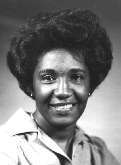 12 – On this date in 1977, Azie Taylor Morton of St. John Colony in Dale, Texas becomes the first African-American appointed to the office of Treasurer of the United States. Tabbed by President Jimmy Carter, Morton is the only black to ever hold that post. As a child, Taylor worked in cotton fields, but was an outstanding student and entered Huston-Tillotson College at age 16, graduating cum laude in 1956 with a degree in commercial education. She served as Treasurer until January 20, 1981.
12 – On this date in 1977, Azie Taylor Morton of St. John Colony in Dale, Texas becomes the first African-American appointed to the office of Treasurer of the United States. Tabbed by President Jimmy Carter, Morton is the only black to ever hold that post. As a child, Taylor worked in cotton fields, but was an outstanding student and entered Huston-Tillotson College at age 16, graduating cum laude in 1956 with a degree in commercial education. She served as Treasurer until January 20, 1981.
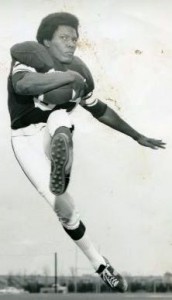 12 – In 1970, wide receiver Hugh McElroy of Houston (Worthing HS) became the first African-American to start a game for the Texas A&M football team. The next week, at LSU, he became A&M’s first black player to score a touchdown when he caught a short pass from quarterback Lex James for the winning touchdown with 13 seconds left in the game giving the Aggies a 20-18 upset.
12 – In 1970, wide receiver Hugh McElroy of Houston (Worthing HS) became the first African-American to start a game for the Texas A&M football team. The next week, at LSU, he became A&M’s first black player to score a touchdown when he caught a short pass from quarterback Lex James for the winning touchdown with 13 seconds left in the game giving the Aggies a 20-18 upset.
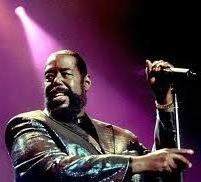 12 – Singer and composer Barry White was born on this date in 1944 in Galveston, but was raised in Los Angeles, where he began his musical career at age 11 playing piano (self-taught) on the Jesse Belvin hit, “Goodnight My Love.” White also made several records during the early 60s, under the name “Barry Lee.” In 1969, he put together “Love Unlimited,” a successful female vocal trio. A five-time Grammy winner, his gravelly, seductive, bass voice also earned him 106 gold and 41 platinum albums, 20 gold and 10 platinum singles, with worldwide sales in excess of 100 million.
12 – Singer and composer Barry White was born on this date in 1944 in Galveston, but was raised in Los Angeles, where he began his musical career at age 11 playing piano (self-taught) on the Jesse Belvin hit, “Goodnight My Love.” White also made several records during the early 60s, under the name “Barry Lee.” In 1969, he put together “Love Unlimited,” a successful female vocal trio. A five-time Grammy winner, his gravelly, seductive, bass voice also earned him 106 gold and 41 platinum albums, 20 gold and 10 platinum singles, with worldwide sales in excess of 100 million.
 13 – Olympic sprint gold medalist Michael Johnson was born on this day in Dallas in 1967. Johnson graduated from Baylor University in 1990 with a marketing degree. As an Olympian, he won 18 gold medals combined in the 200- and 400-meter events and was national champion in those events eight times. at the 1996 Olympics where he became the first man to ever win gold at 200 meters and 400 meters at the same Olympics.
13 – Olympic sprint gold medalist Michael Johnson was born on this day in Dallas in 1967. Johnson graduated from Baylor University in 1990 with a marketing degree. As an Olympian, he won 18 gold medals combined in the 200- and 400-meter events and was national champion in those events eight times. at the 1996 Olympics where he became the first man to ever win gold at 200 meters and 400 meters at the same Olympics.
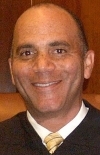 14 — In 2004, San Antonio native Wallace Jefferson became the first African American Chief Justice of the Supreme Court of Texas when he was appointed to the post by Gov. Rick Perry. The University of Texas School of Law honored Chief Justice Jefferson with its Outstanding Alumnus Award in 2005. He is the descendant of a slave who was owned by a Waco judge before the Civil War. That slave, Shedrick Willis, served his community as a two-term member of the Waco City Council after the War.
14 — In 2004, San Antonio native Wallace Jefferson became the first African American Chief Justice of the Supreme Court of Texas when he was appointed to the post by Gov. Rick Perry. The University of Texas School of Law honored Chief Justice Jefferson with its Outstanding Alumnus Award in 2005. He is the descendant of a slave who was owned by a Waco judge before the Civil War. That slave, Shedrick Willis, served his community as a two-term member of the Waco City Council after the War.
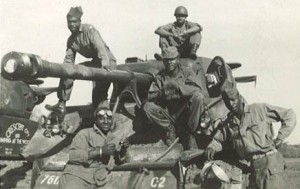 15 — The 761st Tank Battalion arrived at Camp Hood in Killeen on this day in 1943 to begin advanced training for duty in World War II. Known as the “Black Panthers,” the 761st would become the Army’s first all-black tank unit and they served with valor. However, the widely held belief in Washington, D.C. about using blacks in combat roles, especially in armored units, was as one officer observed, “As fighting troops, the Negro must be rated as second-class material, this primarily to his inferior intelligence and lack of mental and moral qualities.” Early on, Gen. George S. Patton had agreed with that sentiment, saying, “A colored soldier cannot think fast enough to fight in armor.” Yet, when he needed armored reinforcements for his Third Army, he got the 761st, which he had seen training at Camp Hood. Upon their arrival in Europe, he addressed the men and told them, “I would never have asked for you if you weren’t good. I have nothing but the best in my Army. I don’t care what color you are as long as you go up there and kill those Kraut sons of bitches. Everyone has their eyes on you and is expecting great things from you. Most of all your race is looking forward to you. Don’t let them down and damn you, don’t let me down!’ The 761st was involved in combat for 183 straight days, including action in the Battle of the Bulge. The unit received the Presidential Unit Citation and one of its members, Staff Sgt. Ruben Rivers, posthumously received the Congressional Medal of Honor. The tankers also participated in the liberation of Gunskirchen, a subcamp of the Mauthausen concentration camp, in May 1945.
15 — The 761st Tank Battalion arrived at Camp Hood in Killeen on this day in 1943 to begin advanced training for duty in World War II. Known as the “Black Panthers,” the 761st would become the Army’s first all-black tank unit and they served with valor. However, the widely held belief in Washington, D.C. about using blacks in combat roles, especially in armored units, was as one officer observed, “As fighting troops, the Negro must be rated as second-class material, this primarily to his inferior intelligence and lack of mental and moral qualities.” Early on, Gen. George S. Patton had agreed with that sentiment, saying, “A colored soldier cannot think fast enough to fight in armor.” Yet, when he needed armored reinforcements for his Third Army, he got the 761st, which he had seen training at Camp Hood. Upon their arrival in Europe, he addressed the men and told them, “I would never have asked for you if you weren’t good. I have nothing but the best in my Army. I don’t care what color you are as long as you go up there and kill those Kraut sons of bitches. Everyone has their eyes on you and is expecting great things from you. Most of all your race is looking forward to you. Don’t let them down and damn you, don’t let me down!’ The 761st was involved in combat for 183 straight days, including action in the Battle of the Bulge. The unit received the Presidential Unit Citation and one of its members, Staff Sgt. Ruben Rivers, posthumously received the Congressional Medal of Honor. The tankers also participated in the liberation of Gunskirchen, a subcamp of the Mauthausen concentration camp, in May 1945.
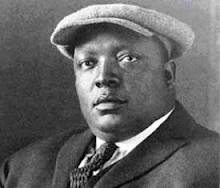 17 – Rube Foster, known as the “Father of Black Baseball,” was born on this day in 1879 in Calvert. Foster was a pitcher (right-handed), manager, and team owner who started his career at age 18 with the semi-pro Waco Yellow Jackets. In 1920, Foster led the founding of baseball’s first successful all-black league, the Negro National League, headquartered in Kansas City, Mo. Foster was league president, as well as manager and pitcher for the powerful Chicago American Giants. The NNL had teams in the South and Midwest. Some of the Texas teams affiliated with the NNL and other all-black baseball associations were: Austin Black Senators, Fort Worth Black Panthers, Houston Eagles, San Antonio Black Bronchos, San Antonio Black Indians. Foster was elected to the Baseball Hall of Fame in 1981.
17 – Rube Foster, known as the “Father of Black Baseball,” was born on this day in 1879 in Calvert. Foster was a pitcher (right-handed), manager, and team owner who started his career at age 18 with the semi-pro Waco Yellow Jackets. In 1920, Foster led the founding of baseball’s first successful all-black league, the Negro National League, headquartered in Kansas City, Mo. Foster was league president, as well as manager and pitcher for the powerful Chicago American Giants. The NNL had teams in the South and Midwest. Some of the Texas teams affiliated with the NNL and other all-black baseball associations were: Austin Black Senators, Fort Worth Black Panthers, Houston Eagles, San Antonio Black Bronchos, San Antonio Black Indians. Foster was elected to the Baseball Hall of Fame in 1981.
Blog: Ron Goodwin, author, PVAMU history professor
Ron Good  win’s bi-weekly blog appears exclusively for TIPHC/TBHPP. Goodwin is a San Antonio native and Air Force veteran. Generally, his column will address contemporary issues in the black community and how they relate to black history. He and the TIPHC/TBHPP staff welcome your comments. His latest blog is, “Race Matters, or, What the hell do I have to lose?” Read it
win’s bi-weekly blog appears exclusively for TIPHC/TBHPP. Goodwin is a San Antonio native and Air Force veteran. Generally, his column will address contemporary issues in the black community and how they relate to black history. He and the TIPHC/TBHPP staff welcome your comments. His latest blog is, “Race Matters, or, What the hell do I have to lose?” Read it
Submissions Wanted
Historians, scholars, students, lend us your…writings. Help us produce the most comprehensive documentation ever undertaken for the African American experience in Texas. We encourage you to contribute items about people, places, events, issues, politics/legislation, sports, entertainment, religion, etc., as general entries or essays. Our documentation is wide-ranging and diverse, and you may research and write about the subject of your interest or, to start, please consult our list of suggested biographical entries and see submission guidelines. However, all topics must be approved by TIPHC/TBHPP editors before beginning your research/writing.
We welcome your questions or comments via email or telephone – mdhurd@pvamu.edu.
